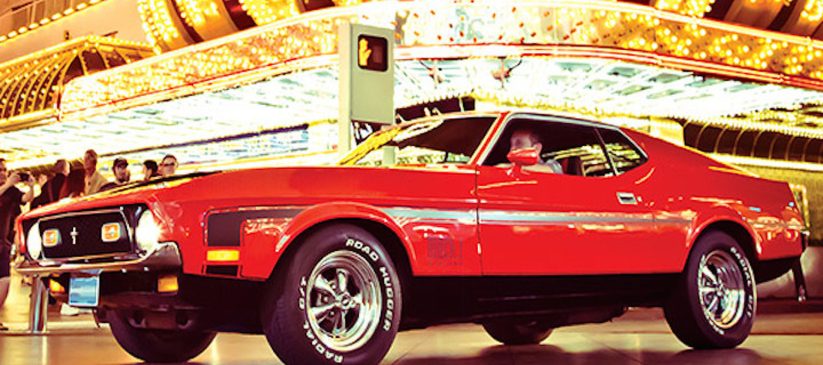
As we raise our glasses to toast the 60th anniversary of the iconic Ford Mustang, it’s not just a celebration of a car; it’s a salute to a cultural phenomenon that has withstood the test of time. The first pony car that graced the world’s stage was unveiled to the public on April 17, 1964, at the New York World’s Fair. Ford’s gamble with the Mustang paid off handsomely, and it quickly became a symbol of American freedom, power, and style.
The man behind the design genius of the first Mustang was none other than Lee Iacocca, then the Vice President of Ford Motor Company. Iacocca envisioned a car that would appeal to a younger demographic and encapsulate the spirit of the American dream. The result was a sleek, affordable, and sporty car that captured the hearts of enthusiasts and non-enthusiasts alike.
The debut of the Mustang was a spectacle, featuring an unprecedented simultaneous unveiling at the World’s Fair and showrooms across the United States. This synchronized launch strategy generated immense excitement, and Ford’s production plants worked tirelessly to meet the unexpected demand. In its first year, over 400,000 Mustangs were sold, creating a new standard for success in the automotive industry.
Over the years, the Mustang evolved into a diverse lineup of models, each pushing the boundaries of performance and design. The Shelby GT350 and GT500 models brought track-inspired performance to the streets, while the Mach 1 and Boss variants added a touch of aggression and power to the Mustang family.
In the realm of auctions, certain Mustangs have become hot commodities for collectors. The 1967 Shelby GT500 Super Snake holds the record for the most expensive Mustang ever sold at auction, fetching a staggering $2.2 million. This rare beast was one of only two produced, and its combination of Shelby performance and unique history makes it a prized possession for any serious collector.
Throughout the decades, renowned designers like Carroll Shelby and Jack Telnack lent their talents to shaping the Mustang’s iconic look. Carroll Shelby’s involvement with the Shelby Mustangs solidified their status as high-performance legends, while Telnack’s design updates in the late ’70s and ’80s modernized the Mustang’s aesthetic, ensuring its relevance in changing automotive landscapes.
In recent years, the Mustang has embraced the future with the introduction of the Mustang Mach-E, an all-electric SUV that maintains the Mustang’s spirit while embracing a sustainable future.
As we celebrate 60 years of the Ford Mustang, it’s clear that this car is more than just a vehicle; it’s a symbol of American innovation, performance, and the enduring spirit of freedom on the open road. Here’s to the next 60 years of Mustang, a legend that continues to gallop into the hearts of car enthusiasts worldwide.